
26 May From the Vault: Photographic History of the Civil War, 1861-1865
May 26, 2016, 11:19 am
General Grant, left center with his hands in his pockets, captured at a Post Office, in September 1861. At the time this photo was taken, General Grant was not yet famous.
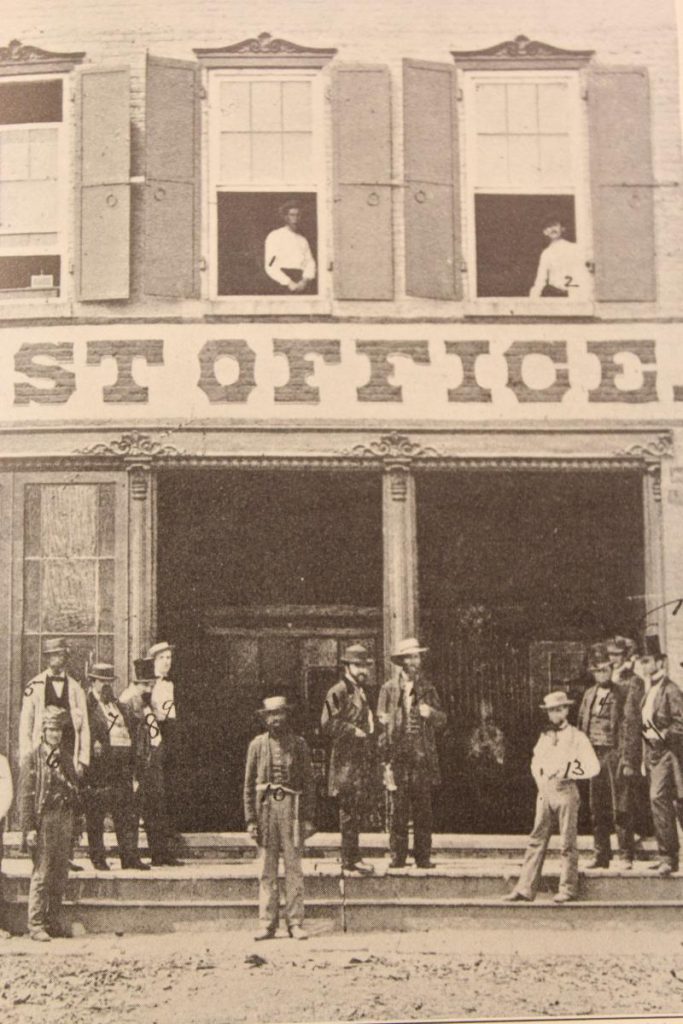
This photograph shows the battlefield where Union Major-General John F. Reynolds was killed in action at Gettysburg. The man on the left is pointing to the spot.
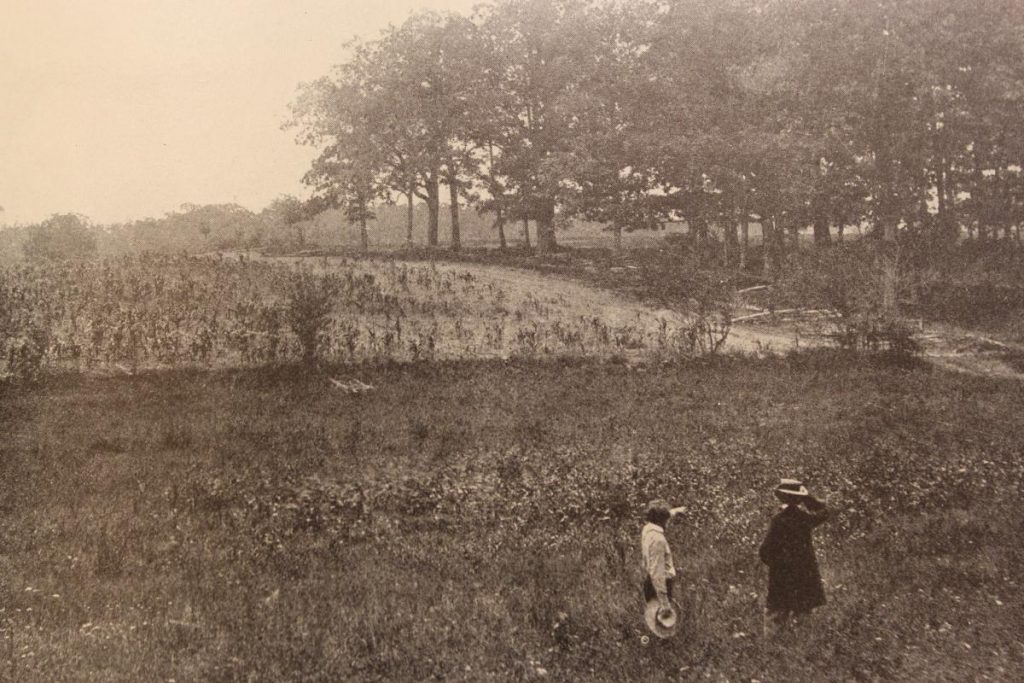
Created about 20 years before the start of the Civil War, photography was really just becoming popular at the outbreak of conflict. The creation of new ways of producing affordable images meant that families could have keepsakes of their serving fathers, brothers, boyfriends and husbands. Mass produced images could be in tintype, or in ambrotype (printed on glass), which allowed for small photographs to be kept by families in small cases to protect the image. The downside of the ease of production meant that the true horrors of war were available for all to see in public exhibitions, or in the newspapers. The New York Times in October, 1862 said: “Mr. Brady has done something to bring home to us the terrible reality and earnestness of war. If he has not brought bodies and laid them in our dooryards and along the streets, he has done something very like it.” This was the first time that scenes of war were available for anyone to see, drastically changing the political approach to war forever.
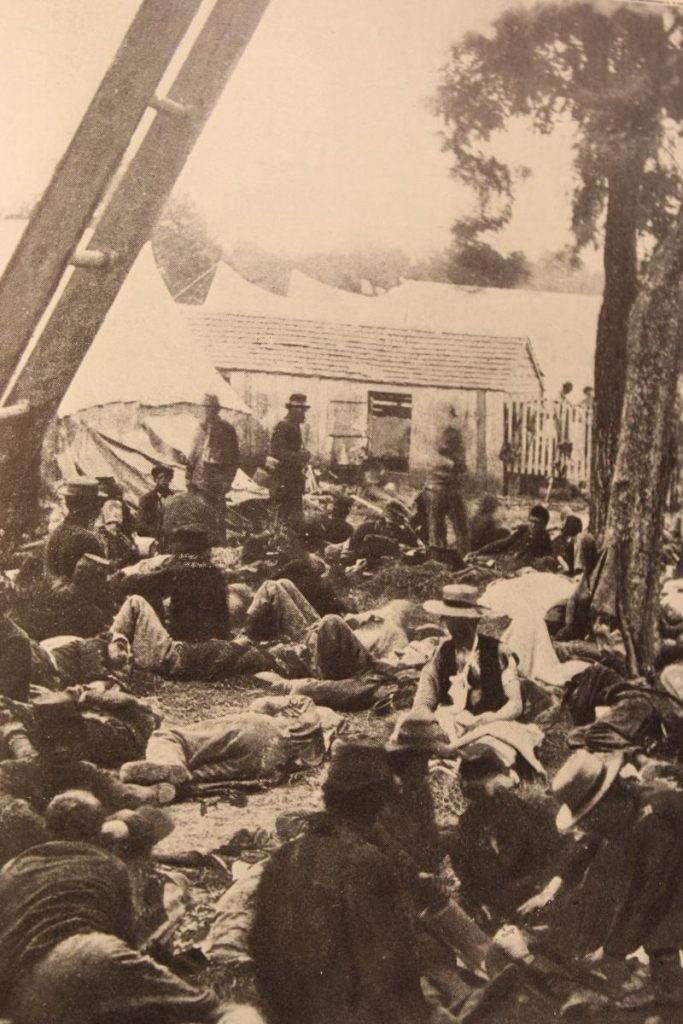
These soldiers were wounded at Gaines’ Mill on June 27th, 1862 and removed to the nearby field-hospital in Savage’s Station, VA. This photo was taken on the morning of June 30th, just before Union troops pulled back and the Confederates took Savage’s Station. On the day of June 30th, these and 2500 other wounded men and their medical attendants became prisoners of war.
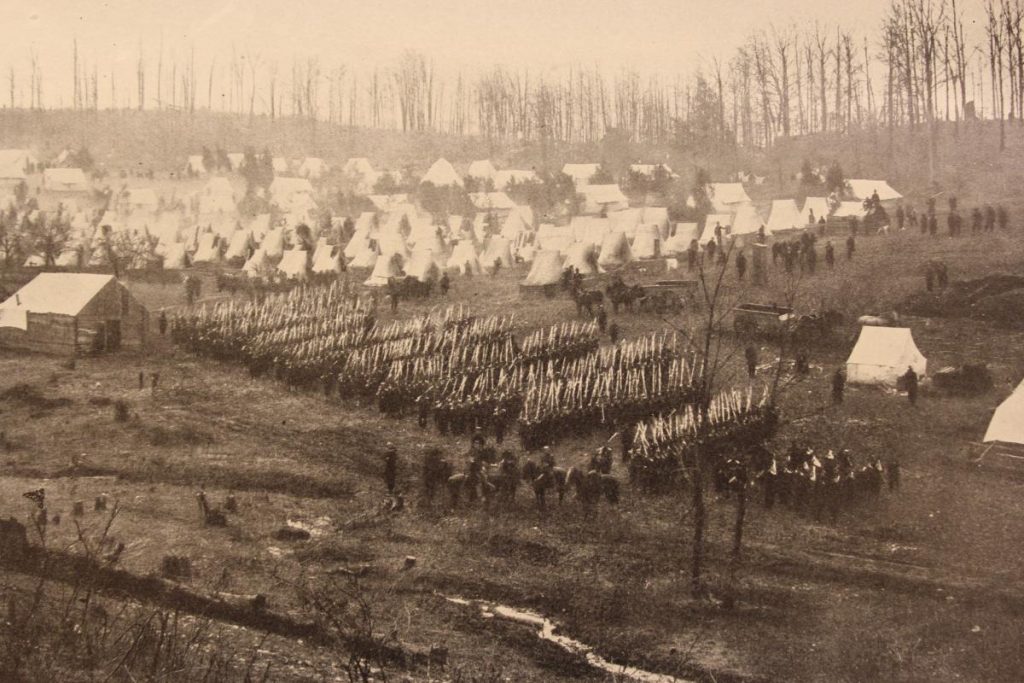
Drilling the 96th Pennsylvania at Camp Northumberland, near Washington 1861. Typically a brigade consisted of approximately 1,000 men. In a single action during the Civil War, the loss in killed, wounded and missing soldiers was over sixty percent of those engaged.
In addition to public and personal use, the opposing governments found photography had its advantages when it came to gaining intelligence about enemy camps and weapons. Equally important information about the daily doings of a Civil War soldier is available to us now because of these photographs. There are images of men playing cards, singing and playing instruments or cleaning equipment. The Civil War is also the first time that black soldiers and slaves were depicted, solidifying the importance of this group’s role in the fighting.
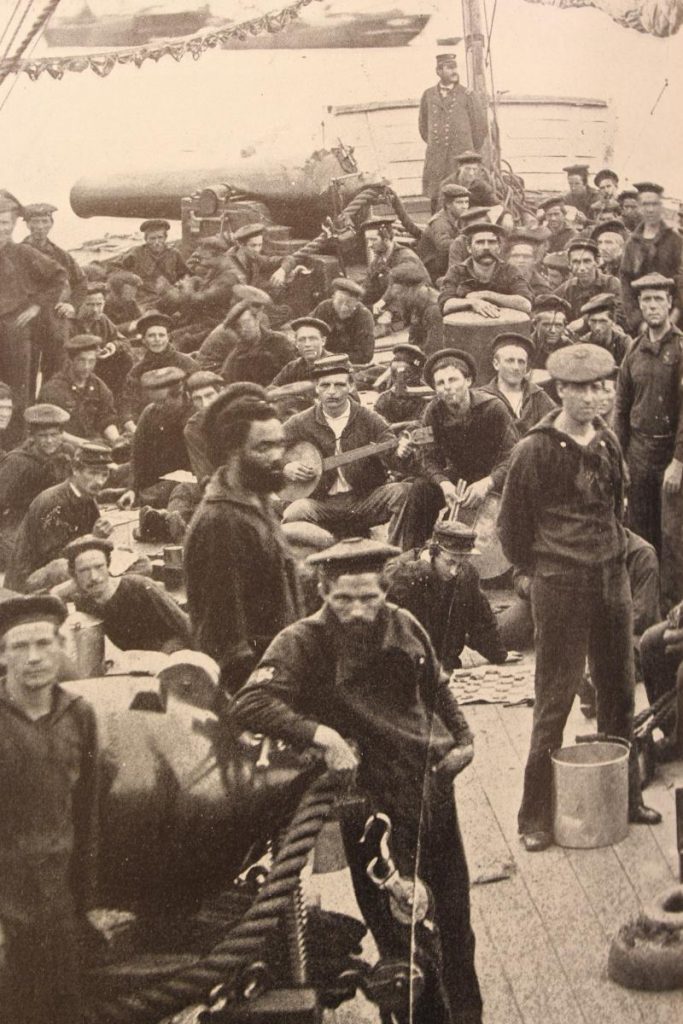
Men relax on the after-deck of the gunboat, “Mendota”.
Despite the advantages and changes brought about by the photographs taken during the years 1861-1865, it must be acknowledged what a hard and emotional job it must have been. Photography was obviously not as advanced, and required a lot of slow moving, chemically dangerous processes and travel. This is the first time we see a concentrated effort to record the horrors of war in a visceral way. Imagine seeing and smelling the aftermath of a hot, bloody battle. There are bugs, attracted to the smell of the photography chemicals, but also to the sweat and rot. Bodies everywhere, landscapes ruined, and yet there is still a dedication to the cause that allows these photographers to pause, collect themselves, and take another photo. Looking at these images it seems war, and the world, have changed so much; and then you see an image of men playing cards, or tuning a guitar, and it seems nothing has changed at all.
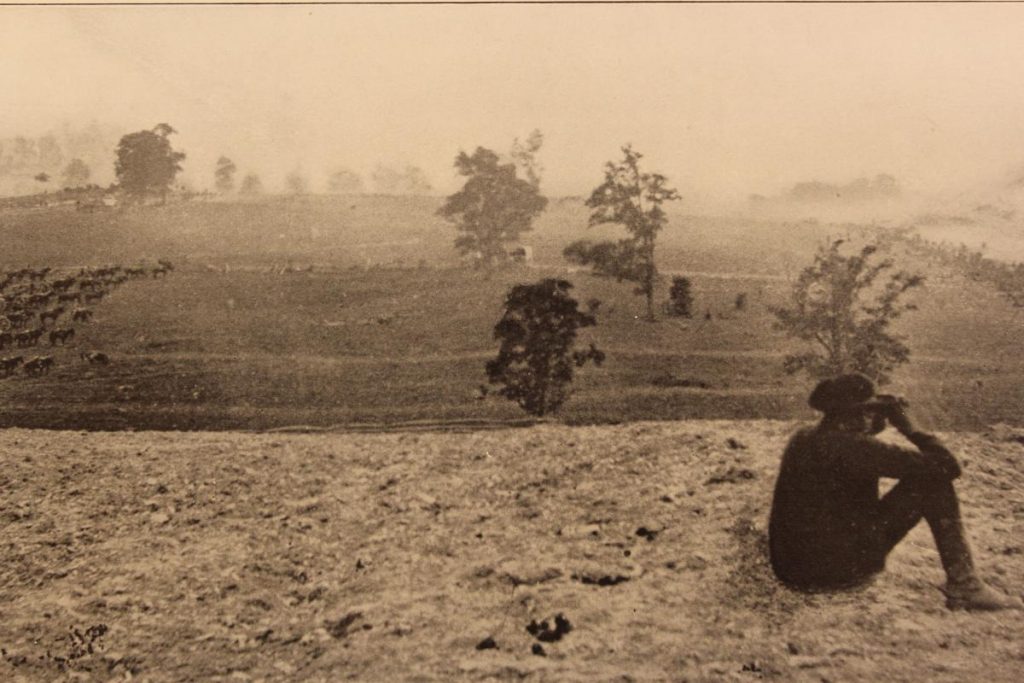
Fog from the battle over Antietam.
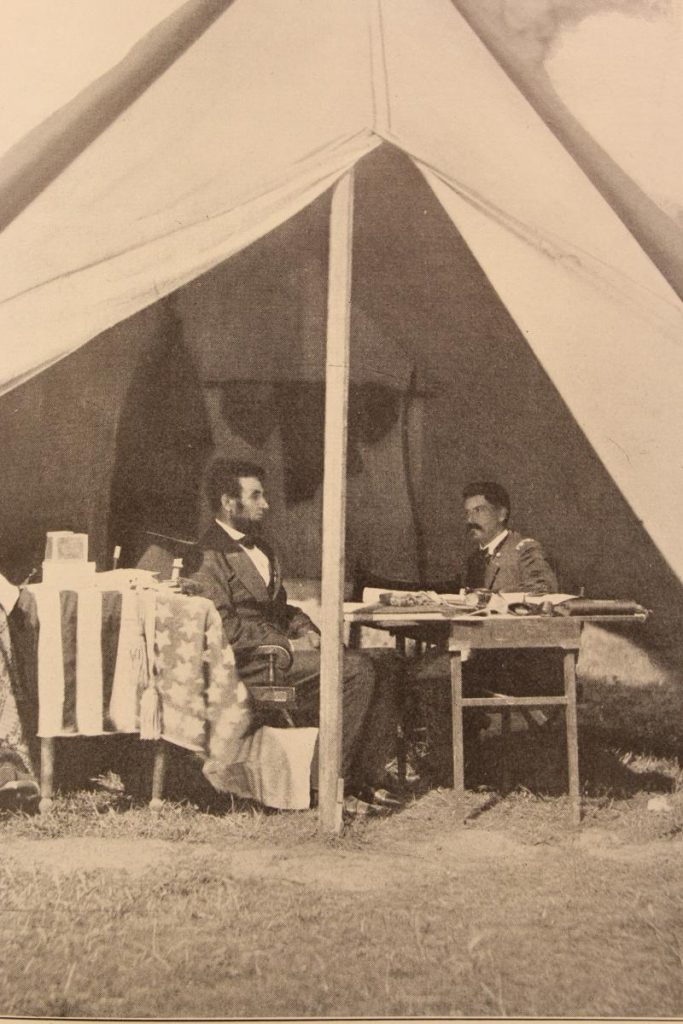
Abraham Lincoln speaks with General McClellan two weeks after Antietam. It was the last time these two men would speak in person. McClellan wrote about the meeting: “We spent some time on the battlefield and conversed fully on the state of affairs. He told me that he was satisfied with all that I had done, that he would stand by me. He parted from me with the utmost cordiality.”
This series of books is available for viewing and research with a reference appointment. For more information please call the Library, or email us at reference@redwoodlibrary.org.

Sorry, the comment form is closed at this time.